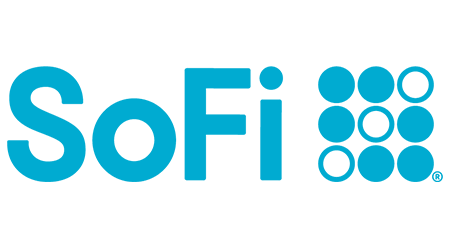
- 0.50% APY on checking balance
- Up to 3.60% APY on savings
- $0 account or overdraft fees
- Earn $50 or $300 when you sign up and set up eligible direct deposit
Whether you’re hitting Bondi Beach, sitting in the Sydney Opera House or touring the Outback’s scenic rock formations, you can pay for almost anything with plastic — including taxis, souvenirs and incidentals. Using a credit card without foreign transaction fee is a great way to save money abroad.
Though cards are widely accepted, keep some cash in your pocket for the rare restaurant or shop that doesn’t take plastic or charges extra for using a card. The Australian dollar is the local currency, and you can get your hands on it through ATMs spread widely around the country at the airport and inside banks, convenience stores, gas stations and shopping centers.



You shouldn’t have any problem using a Visa, Mastercard or American Express card in Australia. But watch out for transaction fees that come with using a card.
Debit cards are typically the preferred option for making ATM cash withdrawals. If you don’t want to link your bank account to your card, however, consider a prepaid travel card — but watch out for its additional fees, too.
Since credit cards are a common payment method in Australia, you may want to consider a travel credit card.The Capital One VentureOne Rewards Credit Card, for example, doesn’t charge the normal foreign transaction fees, helping you keep more money in your wallet (). You could earn rewards on your purchases and get travel insurance, luggage insurance or car rental insurance. With some cards, you could even get a concierge service, which can be helpful when traveling abroad.
Another option could be an airline cobranded card. This type of card helps you save money on flights, checked bags, lounge access and more. Some cards also come with complimentary travel insurance and similar perks.
Tips:
American Express and Discover cards are accepted in Australia, but Mastercard and Visa take the lead when it comes to reliable acceptance.
If you’re looking for an ATM that accepts your Amex, major banks like ANZ, Commonwealth Bank of Australia, St. George Bank and WBC allow cash withdrawals with your card. For Discover cards, look for Bank of China, Bank West, HSBC, iCash or ING ATMs.
| Merchant acceptance | ATM acceptance | |
|---|---|---|
| Visa | ||
| Mastercard | ||
| American Express | ||
| Discover |
A debit card comes in handy for cash withdrawals since you won’t pay any cash advance fees or a cash advance APR. You’ll want to find a card that waives or reimburses foreign transaction and ATM fees, such as the Betterment Checking account which automatically reimburses pesky international ATM fees.
Tips:
When it comes to staying protected against theft, using a prepaid travel card is your best option as it’s not linked to your bank account. However, travel cards can have expensive fees.
To avoid foreign transaction fees, try loading your prepaid travel cards with Australian dollars.
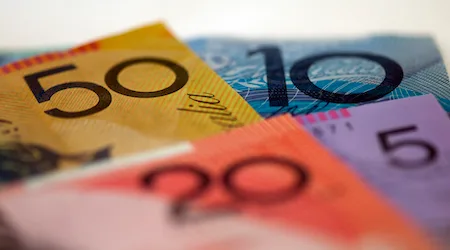
In general, most establishments in Australia accept cards. However, carrying some cash is a good idea in case you stumble across a place that doesn’t.
Either exchange US dollars at a bank or make an ATM cash withdrawal. If you go for the latter, consider using a debit card and preferably one without foreign transaction fees or ATM fees.
Traveler’s checks aren’t widely accepted in Australia. This could make purchasing and cashing your checks a nuisance.
Considering checks come with foreign transaction fees and purchasing fees, they could become more expensive than they’re worth. In Australia, the other payment options could be better alternatives.
Australia uses the Australian dollar with a symbol $ and a currency code AUD.
You could exchange US dollars upon arrival, but the conversion rates at the airport usually aren’t favorable. An ATM cash withdrawal could give you a better rate.
Live Rate
Refreshing in: 60s | Wed, Dec 17, 01:16PM GMT
Common Australian dollar banknotes:
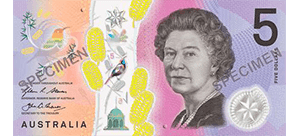 | 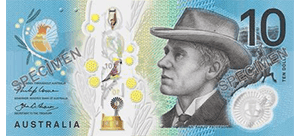 | 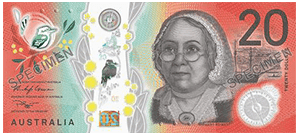 |
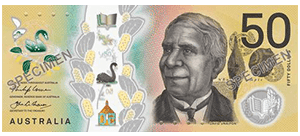 | 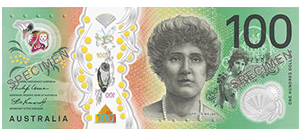 |
The Australian banking system has an extensive network, including offering ATMs inside banks, convenience stores, gas stations, shopping centers and on the streets. ATMs should accept both Mastercard and Visa, but you may see Visa’s Plus or Mastercard’s Maestro or Cirrus logos displayed. To avoid foreign transaction and ATM fees, go with a Betterment Checking debit card in hand, which reimburses these fees automatically.
With WorldRemit you can send money to Australia before you depart. Once you arrive, pick it up from a local WorldRemit agent.
To make the transfer, you need to submit an Australian phone number and an address.
If you don’t have one, WorldRemit recommends submitting the phone and the address of the place you’ll be staying at. This is in case the local agent needs to contact you. But you can still pick up the money with only your passport.
Plastic is widely accepted throughout Australia. For best value, consider using a travel or an airline cobranded credit card for purchases and a debit card for ATM cash withdrawals. But make sure your cards have no foreign transaction fees.
If you would like to know more about which payment method would work best overseas, check out our travel money guide page.
Back to top
How to pay, how much to bring and travel money suggestions for your trip to USA.
How to pay, how much to bring and travel money suggestions for your trip to New Zealand.
How to pay, how much to bring and travel money suggestions for your trip to Thailand.
How to pay, how much to bring and travel money suggestions for your trip to Vietnam.
How to pay, how much to bring and travel money suggestions for your trip to Mexico.
How to pay, how much to bring and travel money suggestions for your trip to Portugal.
How to pay, how much to bring and travel money suggestions for your trip to Germany.
How to pay, how much to bring and travel money suggestions for your trip to Ecuador.
How to pay, how much to bring and travel money suggestions for your trip to Canada.
How to pay, how much to bring and travel money suggestions for your trip to Japan.